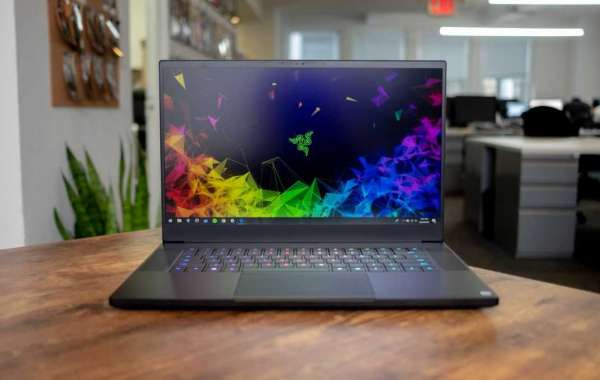Razer has made awesome steps to totally overhaul its Blade gaming workstation for 2018. This year, the organization has dropped the 14-inch demonstrate for … another 14-inch show, in fact.
Razer too has figured out how to pack a 15.6-inch screen into a 14 broad cover, similar to such a significant number of Ultrabook producers, delivering the littlest 15.6-inch gaming PC on the planet, so it claims. The organization overhauled the PC both all around, and the outcomes are great.
In any case, we've additionally discovered that – since even simply a year ago's Blade show – Razer's heap rivals have been working diligently at comparative plans, leaving less space for the brand in the spotlight of super-premium gaming PCs. Here's the means by which the Razer Blade holds its recently challenged ground.
Spec Sheet
Here is the 2018 Razer Blade design sent to TechRadar for survey:
CPU: 2.2GHz Intel Core i7-8750H (hexa-center, up to 4.1GHz with Turbo Boost)
Designs: Nvidia GeForce GTX 1070 (8GB GDDR5 VRAM; Max-Q); Intel UHD 630
Slam: 16GB DDR4 (double channel, 2,667MHz)
Screen: 15.6-inch FHD (1,920 x 1,080) matte show (144Hz; IPS; 100% sRGB)
Capacity: 512GB M.2 SSD (NVMe PCIe 3.0 x4)
Ports: 1 x Thunderbolt 3; 3 x USB 3.1; 1 x scaled down DisplayPort 1.4; 1 x HDMI 2.0
Availability: Intel Wireless AC 9260 (802.11ac; Bluetooth 5.0)
Camera: 1MP inherent webcam (720p)
Weight: 4.63 pounds (2.10kg)
Measure: 13.98 x 9.25 x 0.68 inches (35.5 x 23.5 x 1.73cm; W x D x H)
Cost and accessibility
Razer has evaluated its most recent Blade also to its past PCs: to some degree excessively. The 2018 Razer Blade begins at $1,899 (£1,699, AU$2,899), which gets you a full HD (1,920 x 1,080) show at 60Hz fueled by an indistinguishable processor from alternate setups, however matched with a Nvidia GTX 1060 and 256GB of capacity.
To get the model you see inclined to one side, that will cost you an incredible $2,599 (£2,329, AU$3,999). In the middle of that is a model with the 144Hz show, the GTX 1060 and 512GB of capacity for $2,199 (£1,979, AU$3,299), and one with all that you see to one side with a large portion of the capacity for $2,399 (£2,149, AU$3,699).
Nearly, the most costly form of the Asus ROG Zephyrus GX501 goes for $2,899 (about £2,199, AU$3,919), which gets you a more grounded GTX 1080 inside and a Nvidia G-Sync show – all else being equivalent. The passage level adaptation goes for $2,299 (about £1,749, AU$3,109), giving you a GTX 1070 behind a 120Hz show. To get similar illustrations card in the Razer, that will cost you another 100 bucks or quid.
The MSI GS65 Stealth, in the interim, comes in at its entrance level at only $1,799 (about £1,369, AU$2,439), presenting an indistinguishable processors from the Razer's beginning design, yet with a quicker 144Hz show. At the most noteworthy end, this workstation offers twice as much stockpiling and memory for $2,999 (about £2,279, AU$4,059).
At last, a great part of the new Razer Blade's offer lies in its apparently incomparable plan, the same number of equaling alternatives can get you a similar execution for somewhat less money. It's positively enough for this proofreader to drop the additional cash, however we're not every person.








